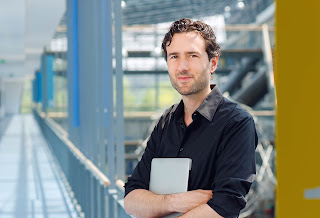 |
| To get the motion of a crown splash right, surface tension is crucial. The simulation shown here uses a mesh-based approach (please click on photo to enlarge). |
Physics simulations for virtual smoke, explosions or water are by now crucial tools for special effects in feature films. Despite their wide spread use, there are central challenges getting these simulations to be controllable, fast enough for practical use and to make them believable.
 |
| A drop of liquid impacting a pillar. The thin sheets that form over time are important for believable visuals, but tough for surface tracking algorithms (please click on photo to enlarge). |
In this talk I will explain simulation techniques for fluids in movies, and why “art directability” is crucial in these settings. A central challenge for virtual special effects is to make them faster. Ideally, previews should be interactive. At the same time, interactive effects are highly interesting for games or training simulators.
 |
| While this image shows a two-way coupled liquid simulation, one-way coupling is often sufficient (or preferred) for special effects applications (please click on photo to enlarge). |
I will highlight current research in flow capture and data-driven simulation which aims at shifting the computational load from run-time into a pre-computation stage, and give an outlook on future developments in this area.
Speaker Background:
 |
| In 2012, Dr. Nils Thuerey won a Technical Oscar. |
Examples of his work are novel algorithms to make simulations easier to control, to handle detailed surface tension effects, and to increase the amount of turbulent detail. After studying computer science, Professor Thuerey acquired a Ph.D. for his work on liquid simulations in 2006. He received both degrees from the University of Erlangen-Nuremberg.
 |
| The Technical Achievement Award |
In 2012, Dr. Thuerey won a Technical Oscar from the Academy of Motion Pictures Arts and Sciences.

No comments:
Post a Comment